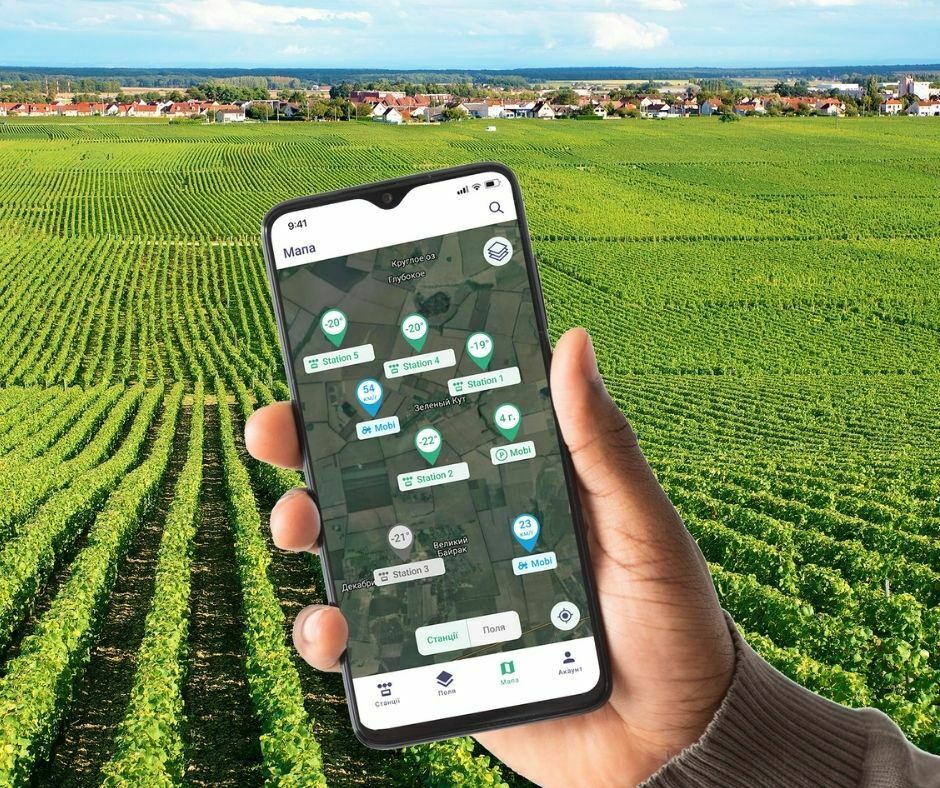There is a fairly common belief that by installing a single weather station on a 2000-3000-hectare cluster or agribusiness, a company will immediately obtain complete information about weather conditions and be able to incorporate them into their own analysis or operational planning.
Let's discuss why this is not entirely accurate or not accurate at all.
We should consider meteorological monitoring not from the perspective of weather stations but from the key weather phenomena that need to be monitored.
Of course, everyone understands that the most accurate data will be at the location of the weather station. However, this doesn't mean that there's a need to install fully equipped stations on every field.
The METEOTREK equipment lineup allows for selecting the optimal configuration for weather stations, which, in turn, enables a more rational use of the company's budget for meteorological monitoring.
To choose the most suitable equipment configuration, you need the following data:
Let's consider a small agricultural company with an area of 2000 hectares that cultivates grain crops:
As a result of the analysis, instead of installing 5 RW 2.1 stations with a total cost of $5610, we obtain the following configuration:
The "rest" of $1716 will be used to equip 2 sprayers with MOBI weather stations ($1050 each) to receive real-time weather data during the application of fertilizers or pesticides in the fields.
So you'll have some budget left for a trip to Egypt))
Our specialists help each customer make this analysis and select the equipment that best suits their business processes.
The selection of weather stations or their configuration is the first step, which greatly influences the quality and effectiveness of meteorological monitoring.
Let's discuss why this is not entirely accurate or not accurate at all.
We should consider meteorological monitoring not from the perspective of weather stations but from the key weather phenomena that need to be monitored.
- Temperature and air humidity are relatively stable values. Of course, there can be changes within a 5-10 km range, but they are not as significant as other factors.
- Wind depends greatly on the terrain. However, it is a crucial parameter, especially during pesticide application.
- Precipitation is a parameter that needs to be monitored with the highest precision. It affects both field operations and soil moisture, which, in turn, impacts crop growth.
- Soil conditions (temperature and moisture) can vary significantly, even within the same field. Without monitoring its condition, it's impossible to plan planting and irrigation.
Of course, everyone understands that the most accurate data will be at the location of the weather station. However, this doesn't mean that there's a need to install fully equipped stations on every field.
The METEOTREK equipment lineup allows for selecting the optimal configuration for weather stations, which, in turn, enables a more rational use of the company's budget for meteorological monitoring.
To choose the most suitable equipment configuration, you need the following data:
- Field map
- Crop types
- Presence of irrigation systems
- Availability of self-propelled sprayers
Let's consider a small agricultural company with an area of 2000 hectares that cultivates grain crops:
- 2 distant groups of fields, with a distance between the farthest points in each group ranging from 25 to 40 km
- Irrigation is not used
- 2 self-owned sprayers
As a result of the analysis, instead of installing 5 RW 2.1 stations with a total cost of $5610, we obtain the following configuration:
- 2 RW 2.1 stations - one for each group. They will provide comprehensive weather information - $2244
- 3 RAIN + AIR PRO stations to refine temperature, air humidity, and precipitation with 0.2 mm accuracy - totaling $1650
The "rest" of $1716 will be used to equip 2 sprayers with MOBI weather stations ($1050 each) to receive real-time weather data during the application of fertilizers or pesticides in the fields.
So you'll have some budget left for a trip to Egypt))
Our specialists help each customer make this analysis and select the equipment that best suits their business processes.
The selection of weather stations or their configuration is the first step, which greatly influences the quality and effectiveness of meteorological monitoring.
